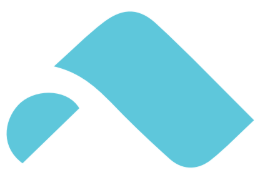With Henry Nafzger. Photos by Hillary Maybery.
Contrary to popular belief, surfing in rivers is nothing like surfing the ocean. “Imagine pausing an ocean wave and setting it in reverse,” explains Henry Nafzger, a river surfer from Boise, ID. Instead of surfing with the wave, you’re right on top of it, cutting back and forth.
Not only is everything in reverse, but it’s also a completely different speed. “I've yet to be on an ocean wave that's as quick underfoot as the Boise Whitewater Park,” says Henry, “and it's only two feet [tall].”

Henry (@henrynafzger) surfing at the Boise Whitewater Park
Instead of paddling out to catch a wave, you start by standing at the wave’s entry point with your board hovering above the water. From there you have two options: 1) hop onto your board feet first, or 2) jump out on your stomach and pop up onto your feet once you’re at the bottom of the wave. That said, the necessary skillset–balance, strength, determination–is definitely something that ocean and river surfing share.
Decades before anyone started surfing the 34th Street Wave at Boise Whitewater Park, river surfing was born in the heart of Munich. It was the 1970s when a group of surfers decided to hitch a tow rope to the bridge over The Eisbach and skim its continuous wave.
Even though river surfing started in the 70s, it’s remained relatively niche over the years. “River surfing is such a cool new subculture,” Henry explains. “It's still really small, but it’s blown up since 2010.” Read on to learn more about river surfing, Henry’s advice for getting into the sport, and some of his favorite spots.
Getting Into River Surfing
When Henry’s dad read about the Boise Whitewater Park in the newspaper, he was surprised to learn that it was only 15 minutes from their house and had already been around for nearly a decade. Curious about the park, Henry’s dad took him and his brother to try it out. Henry considers himself athletic, so he thought, ‘this shouldn’t be too difficult,’ but he was very, very wrong. “I just totally ate it every single time. I was so bad. It's so much harder than it looks,” Henry laughs.

Waiting for his turn to hop on the wave, Henry hangs out on the side of the river
In spite of the rough start, he was hooked, and by the end of the season, Henry’s dad surprised him and his brother with some used boards. “Since then, we've been down there almost every day.” Yes, you read that right–you can surf straight through a Rocky Mountain winter if you’ve got the right wetsuit.
The Advice
When getting into any new activity, “know before you go” is always a good idea, especially when it involves something intense like whitewater rapids. Here are some of Henry’s tips for river surfing:
-
Always Put Safety First. “Have a general idea of how a river works. Know what an eddy is, where there are seams, or where you can get sucked into a hole so you don't get freaked out.”
-
Keep a Positive Attitude. “Come into it with a good attitude because it can be really frustrating to start, especially if you're a really good surfer in the ocean. It's humbling to just get beaten up by a two-foot wave.”
-
Get the Right Gear. “You definitely need a small board. It doesn't really matter how good you are. If you're on a big ocean board, it's not going to work. A leash is always recommended when starting, too, so you don't lose your board."
-
Embrace the Community. Rides on the wave are typically one at a time and last about 30 seconds, which creates a queue and the chance to chat with other surfers. “Everybody down there is super nice. If you're not the one on the wave, you're talking to the people next to you, so you learn all kinds of things about people down there. It's an interesting age demographic, too. When my brother and I started a few years ago, we were the only kids, other than one other guy who went to our school. That was it. The rest were older guys, probably anywhere from 40 to 75.”

Surfers wait in line as Henry's friend takes his turn on the wave
The Best River Surfing Gear
Here are the essentials Henry recommends for a good time on the river waves:
-
Wetsuits: “I wear a wetsuit year-round. I wear a 4/3 or a 3/2 [the thickness of the wetsuit measured in millimeters] in the summer. In the winter, I wear a 5/4 that has a hood on it with boots and gloves, so you're covered from head to toe because the water's freezing.”
-
Boards: “A lot of the time people show up with their ocean boards and surf the river, but you'll snap the nose right off. In the river, you don't really see anything over five feet long. I surf a four-foot board.”
-
Flotation: “The wetsuit typically gives you flotation. When you get to gnarlier waves, like natural waves that aren't constructed, people wear life jackets more often because the water's so much faster and bigger.”

Henry walking along the Boise River with friends
The Lingo
Want to sound like you know what you’re doing when you hit the river? Study up.
-
Standing waves are created by the general structure of the river with a higher point followed by a steep drop off. That high-to-low structure, whether it be a natural feature or human-constructed dam, is what creates the wave.
-
Tidal bores are completely different and created by the tide which starts in the ocean and comes up river all at once. “That's pretty rare,” Henry says.
-
CFS (cubic feet per second) refers to the volume of water and the rate at which it’s moving.
-
Quiver is a surfer’s collection of boards.
-
Dawn patrol is a term reserved for the dedicated few who make it out for a sunrise surf sesh. This term is also used by early morning skiers and other athletes.
-
Eddies are circular currents of fast water that flow in the opposite direction of the river’s main current and are created by standing features like rocks. Getting sucked into an eddy when unprepared can be dangerous.
-
Seams are the junction between two areas of water moving at two different speeds. These can also be dangerous if you’re unprepared.

With boards in hand Henry and friends skate over to the Boise Whitewater Park
Top River Surfing Spots
Around the globe, there are a number of human-made and natural river surfing locations. Here are some of Henry’s favorites:
Bend Whitewater Park on the Deschutes River in Bend, Oregon – Human-made
Boise Whitewater Park on the Boise River in Boise, Idaho – Human-made
The Eisbach off of the Isar River in Munich, Germany – Natural
Kelly’s Whitewater Park on the in Cascade, Idaho – Human-made
Loscha Pipeline on the Loscha River southwest of Missoula, Idaho – Natural
Lunch Counter Rapid on the Snake River in Jackson, Wyoming – Natural
Caroline Maahs is a writer based in Salt Lake City, UT. Follow along on IG @carolinemaahs












